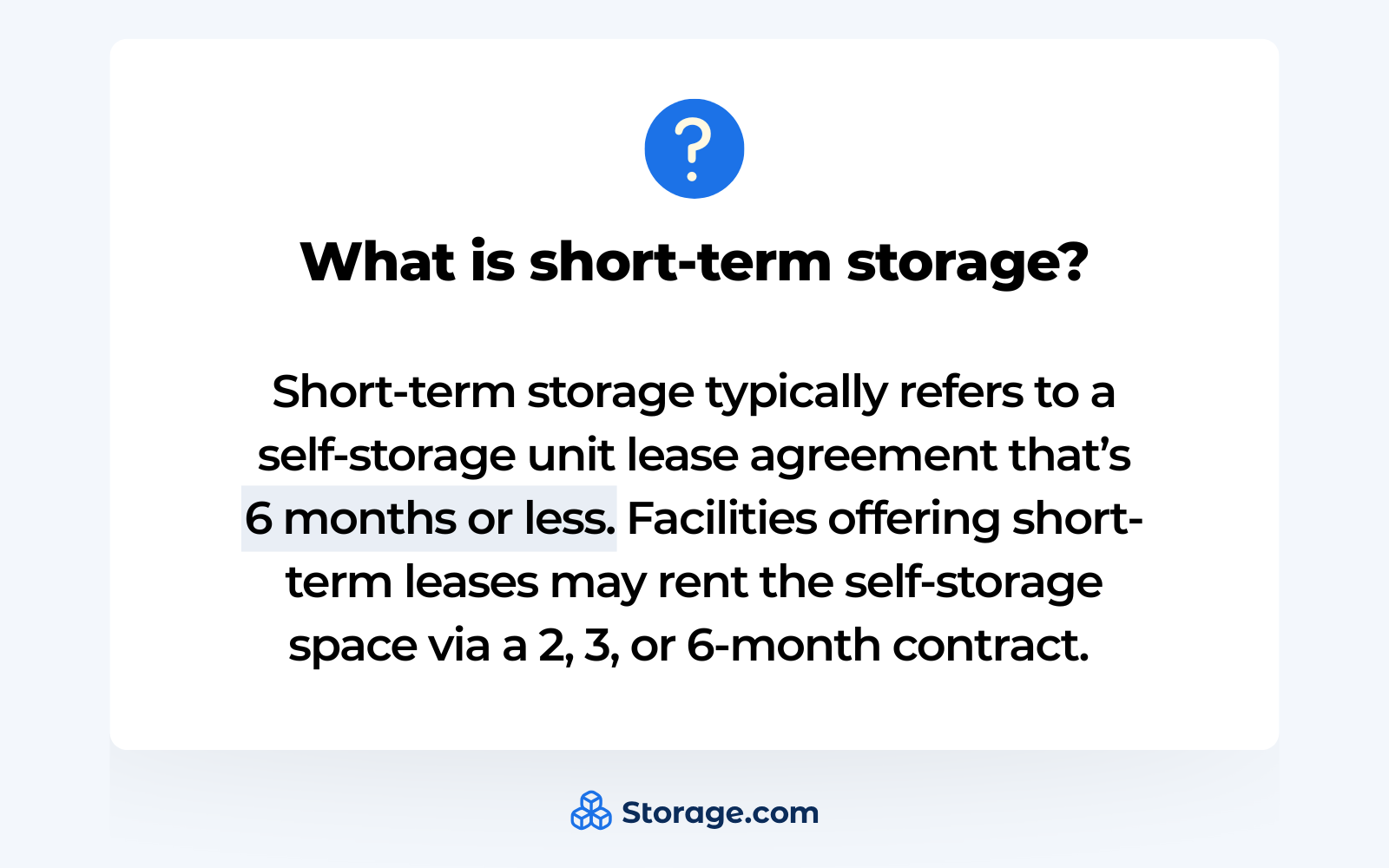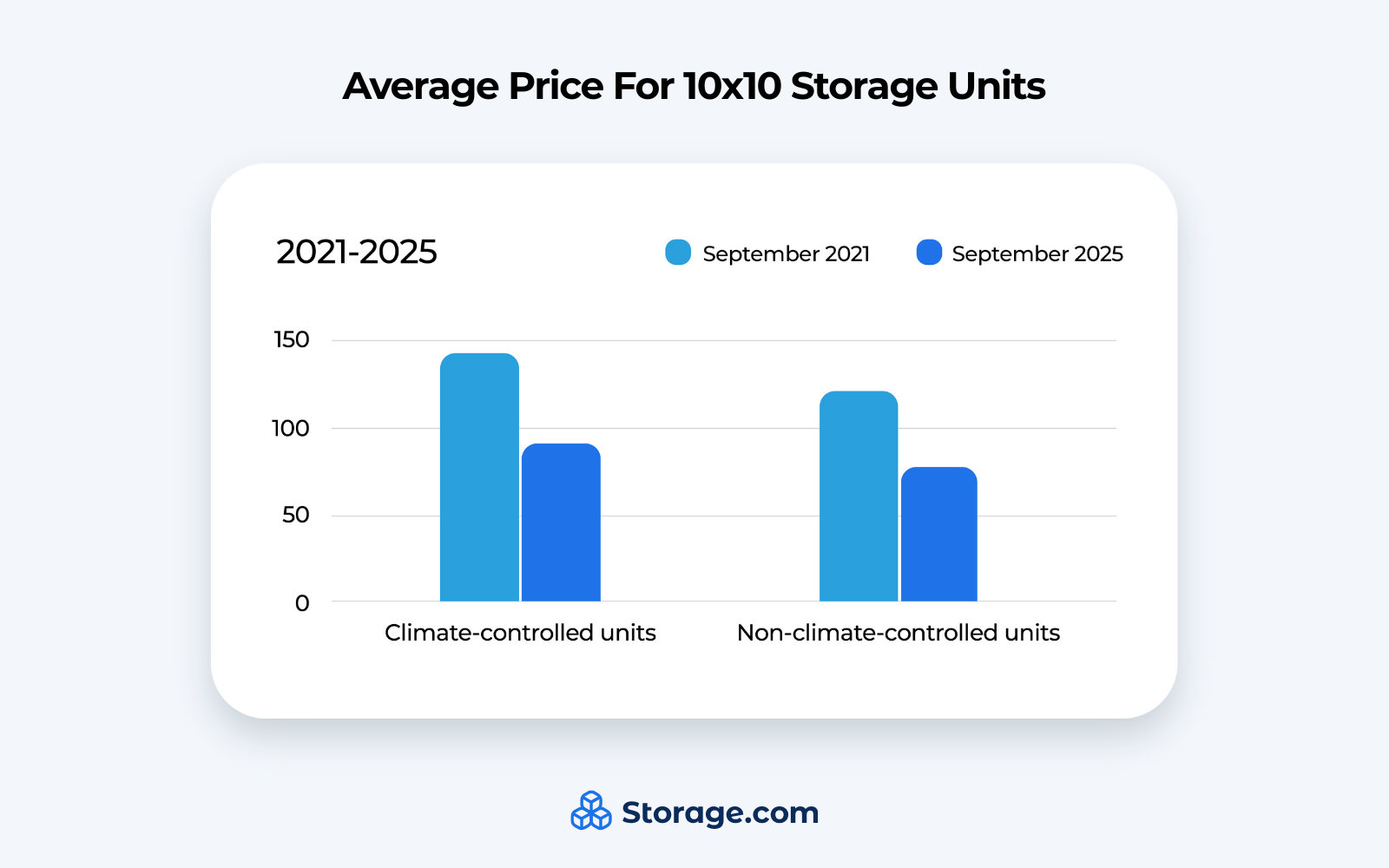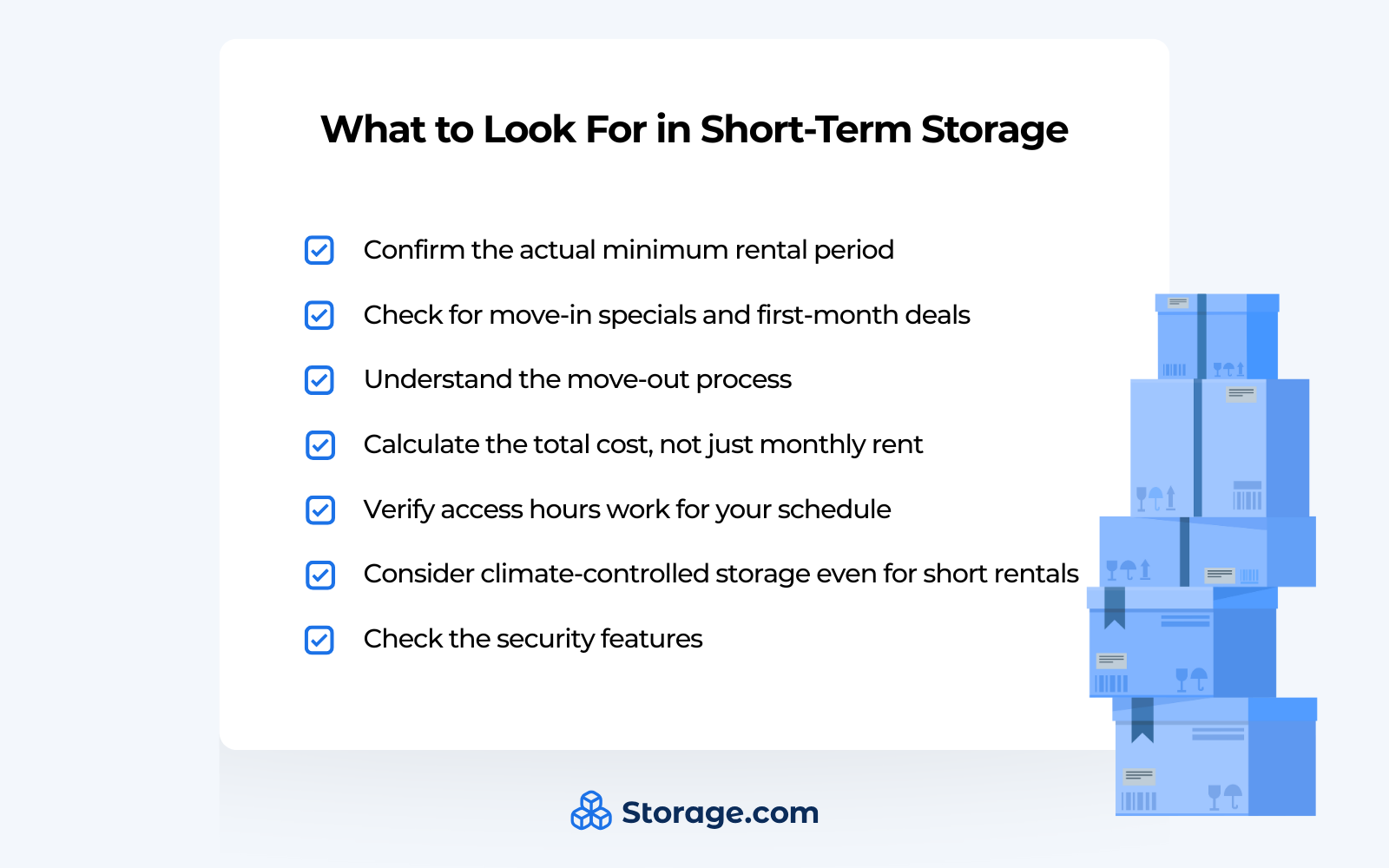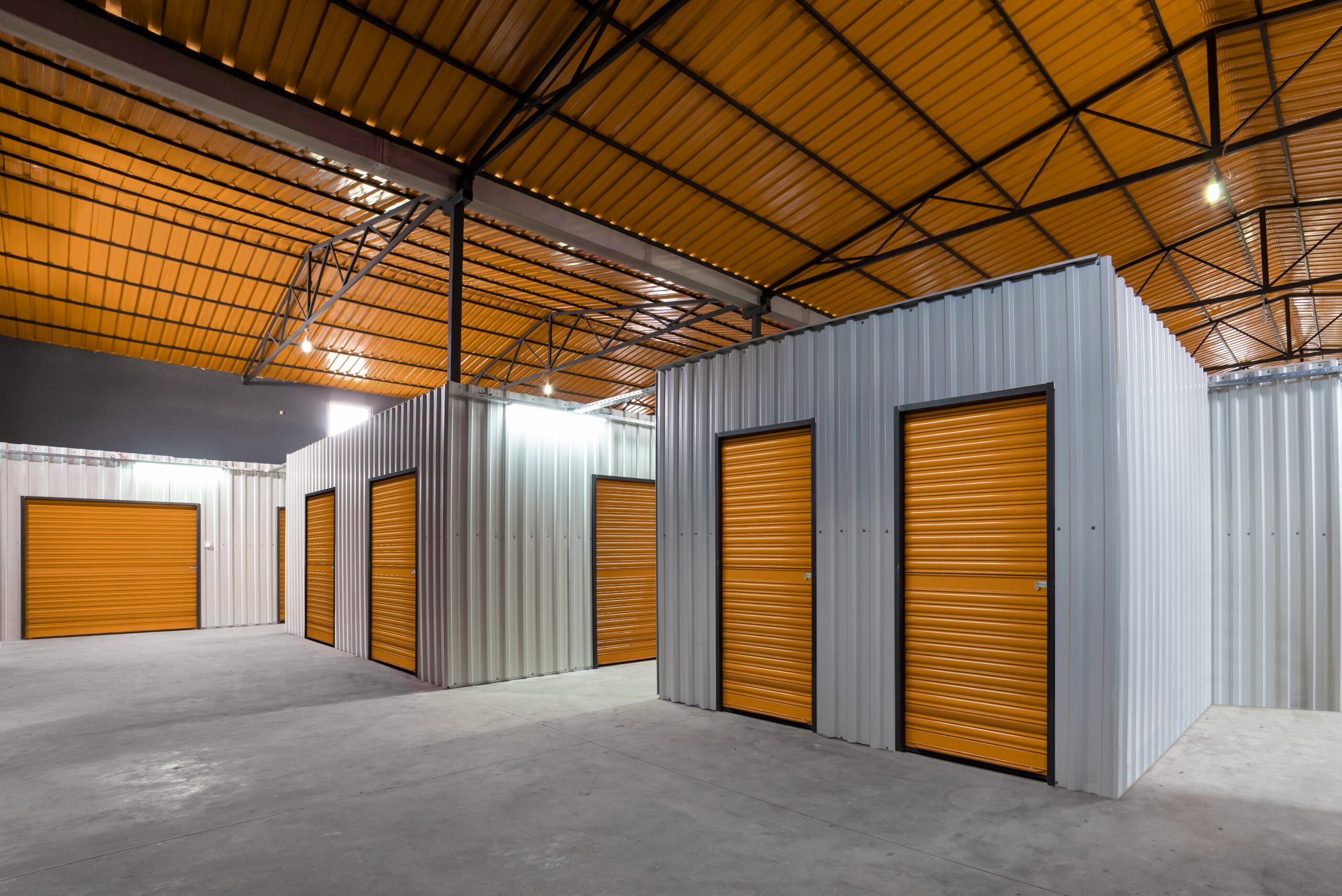Article takeaways
- With self-storage market trends shifting toward more flexible leases, self-storage tenants are using temporary storage units for transitional periods rather than long-term storage solutions.
- Prices have fallen dramatically since their 2021 peak, with 10×10 climate-controlled units dropping from $1.44 to $0.91 per square foot, while non-climate-controlled units fell from $1.21 to $0.78 per square foot.
- The pandemic-driven construction boom created an oversupply of storage units, with self-storage construction spending peaking at $6.9 billion in 2023, adding 8.9% new inventory over three years, which outpaced demand and forced facilities to lower prices.
- The decrease in prices and increase in moving activity and life transitions are pushing tenants to use short-term storage for home renovations, college moves, downsizing, military relocations, and staging homes for real estate viewings.
- Self-storage facilities are competing to fill vacant units by offering short-term options, first-month deals, and no long-term contracts, making temporary storage more accessible and affordable than ever.
The self-storage market has come a long way. Ten years ago, renting a self-storage space meant committing to a two-year contract – 24 months of monthly payments.
These days, self-storage facilities offer more flexibility than ever before. Self-storage properties put more emphasis on accessibility and short-term storage in their recent self-storage investments. There are more ways to use self-storage units for business and personal use than there have been historically.
The pandemic and the resulting shift toward more remote work have caused the self-storage industry to explode and peak in 2022. Self-storage companies started constructing more facilities.
But as the self-storage demand plateaued, storage operators were left with more units than they could fill, and the average price per square foot has dropped. The self-storage sector responded by offering more flexible, short-term storage lease agreements as an attempt to fill vacant units.
These shifting self-storage industry trends make temporary storage units a more accessible option for a variety of scenarios than ever before. Lower prices and flexible leases allow more of us to use storage without long-term commitments or breaking our budget. This allows people to find new ways to use self-storage to accommodate their lives during transitional periods.
This article will go into detail about the shift in short-term self-storage industry trends. We’ll review the decreased unit pricing and increased availability, and how storage facilities are offering temporary storage deals to fill units. We’ll also reveal how you can take advantage of these short-term storage deals, and how our signature Storage.com search tool can help you find a short-term storage unit with all the features you need near you.
Understanding the Shift in Short-Term Self Storage Industry Trends

Before we examine the basics of the shift toward temporary self-storage, let’s start with understanding the basics: what is short-term storage?
Short-term storage typically refers to a self-storage unit lease agreement that’s 6 months or less. Facilities offering short-term leases may rent the self-storage space via a 2, 3, or 6-month contract. Other, month-to-month contacts give the tenant the option to auto-renew or cancel and move out at the end of each month.
There was a time when short-term leases were a rare thing in the self-storage market. But they’re more than just common, they’re trending.
The steady decline in unit prices since 2022 has created a more competitive environment in the self-storage sector.
To fill units and maintain occupancy rates, storage operators now offer promotional deals, flexible lease terms, and temporary storage unit options to make self-storage appealing to a wider base. These shifts provide a more diverse customer experience in the process.
So why the shift toward short-term storage? Storage units used to be seen by customers and marketed by storage facilities as a permanent solution for long-term storage, as a remote work office, workspace, or business inventory storage system, etc.
More and more storage facilities are offering short-term leases as a means of enhancing customer satisfaction and piquing the interest of new tenants. As a result, storage unit renters have gotten creative with how they use self-storage spaces.
- You can put your things into storage during a home renovation so they don’t risk getting damaged or misplaced during the repairs.
- You can also use temporary storage units to move by packing as much of your belongings up ahead of time and putting them in the storage unit, staged for moving.
- Rather than having to move all in one day, you can save yourself some time, money, and stress by moving from the storage unit to the new place little by little.
- Since you’ll be starting with the critical items you need for daily life, you can organize these essentials to be the easiest things to reach ahead of time.
In addition to these ever-diversifying use cases, there are also some contributing social factors behind these shifting self-storage market trends. We’ll get more into them later on. First, let’s take a look at the numbers behind them.
Self Storage Industry Trends: The Numbers Behind the Increasing Temporary Storage Unit Market Size

The self-storage market has changed the way it rents storage units in recent years, with self-storage facilities shortening the contract periods and making rental rates more accessible. Examining the recent shift in rental rates and self-storage industry pricing trends can help reveal how customers have been using self-storage units to their benefit.
Since the classic 10×10 unit with 100 rentable square feet is among the most popular unit sizes, let’s take a look at how the average price per square foot of both climate-controlled 10×10 and non-climate-controlled units of the same size has changed.
| Unit Type | Climate-Controlled Units (10×10 square feet) | Non-Climate-Controlled Units (10×10 square feet) |
|---|---|---|
| Peak Monthly Price (September 2021) | $144.00 per month | $121.38 per month |
| Peak Price Per Square Foot | $1.44 per square foot | $1.21 per square foot |
| Current Price (September 2025) | $90.82 per month | $77.62 per month |
| Current Price Per Square Foot | $.91 per square foot | $.78 per square foot |
| Price Per Square Foot Decrease from Peak to Current Price | $.45 decrease per square foot | $.43 decrease per square foot |
As you can see in the numbers above, storage prices have dropped significantly from their peaks in 2021. Storage unit prices peaked in 2021 but started declining shortly after that. While the drops seemed nominal at first, it’s been a consistent and steady declining trend ever since.
These lower price points make short-term storage a more affordable option than it’s been in years. Thanks to facilities competing for short-term storage business by offering more flexible storage solutions.
These storage market performance conditions make temporary storage units much more accessible than they were in the 2021-2022 self-storage industry peak.
While some storage facilities offer month-to-month leases, others require a minimum of three months. You can use online self-storage market resources like our storage unit search tool to find exactly what you need.
Now that we understand the self-storage pricing trends, let’s take a look at some of the reasons why people are choosing short-term storage options.
Increased Short-Term Storage Market Size: Reasons For Shifting Self Storage Industry Trends
There are lots of life transitions that can be eased by temporary storage spaces, and the self-storage market has learned how to adapt to catering to them. Here are a few of the most common reasons for the shifting self-storage industry transaction volume.
Moving Activity and Relocation
The engine that drives the current self-storage demand is moving activity. One of the common relocation scenarios is when people are between selling one home and buying another. Putting some of your personal belongings and “clutter” into self-storage space allows you to spiff your place up when you show it to potential buyers.
In other cases, your old house may sell before you close on the new one, and you need a place to keep your stuff while you’re staying with friends or family or in a temporary housing situation.
Other moving activities include using self-storage when moving home from or away to college, or when moving in with or out of a partner’s house. Students who opt to travel or study abroad can take advantage of short-term storage until they come home and settle back into their routine.
Military service members often use storage units to keep their belongings when they’re living in smaller-sized military housing or when they’re between stations.
That said, moving activity has slowed down over the past few years due to mortgage interest rates skyrocketing up to 7%. The average mortgage holder is reluctant to sell their house and buy a new one with a high interest rate if their current rate is under 4%, like the good old days.
But while home sales have dropped, homeowners are also using storage to downsize their current home.
- The rising cost of living is no secret.
- Homeowners get ahead of the economy by selling their three-bedroom house.
- By putting a third of their stuff in storage, they’re able to rent an affordable two-bedroom apartment and save money.
The Impact of the Pandemic on the Self-Storage Market
When the pandemic hit, the self-storage occupancy rates initially skyrocketed. Remote work trends allowed more people to move to their dream locations or to travel and work from the road. The result was a self-storage construction boom.
As the commercial real-estate and finance experts at matthews.com put it,
“Developers responded [to the pandemic’s storage unit surge) aggressively, with the self-storage construction boom spending peaking at $6.9 billion in 2023, a 24% increase over the prior year. Over the past three years, self-storage inventory grew by 8.9%, with 2.9% added in the trailing 12 months, according to Yardi Matrix. Between 2019 and 2021, the average construction spending on self-storage facilities was $4.4 billion.”
The pandemic was likely a huge contributor to the 2021-2022 storage unit price peak, but the trends didn’t stop there.
Too Many New Storage Units, Not Enough Tenants
The increased number of storage units, combined with the housing market’s rising interest rates and decrease in available homes, and the economy and job market are in a questionable state.
Remote work and climate change influence homeowners’ migration patterns more and more. And future housing developments were put on hold due to supply-chain disruptions. So as soon as the self-storage market size exploded, the occupancy rates froze in their tracks, leaving those fresh new storage facilities with empty units.
These more recent shifts have inspired the storage industry to make units more accessible by creating more dynamic pricing models.
“Urban markets such as Las Vegas, Tampa, Phoenix, and Charlotte continue to see growth in construction, despite already experiencing heavy supply delivery in recent years. Urban markets like Las Vegas and Atlanta delivered over 10% of their inventory in a three-year period.” Source: matthews.com
Lowering Self Storage Rental Rates To Fill Units
As the self-storage unit numbers increased faster than the facilities could fill their units, the self-storage industry trends dipped in the opposite direction. Storage REITs (Real Estate Investment Trusts) in the primary market locations saw their profits drop into the red, and they lowered their unit profits and offered more flexible, short-term storage unit leases to fill units.
But these trends are always based on averages, and the stats vary by location. For example, some of the secondary markets, like Washington D.C., with fewer available units, saw an influx of residents as the housing market started to dip in primary regions. The self-storage trends in these areas are much more stable.
Why Short-Term Makes Financial Sense
If you or someone you know needs a short-term storage unit, now’s the time to strike. Prices are the lowest they’ve been since 2020, and storage facilities are offering flexible temporary storage unit leases to try to fill units.
- There was a time when you had to sign a 12-24 month lease regardless of whether you needed the unit for a month, a few weeks while you remodeled your kitchen, or for a few days while you moved from one place to another.
- The lack of long-term commitments required to secure a unit right now helps you to avoid paying for time you don’t need.
- Facilities are also offering month-to-month leases, where you can extend your storage space rental if you need to, by paying for the next month.
- Or you can pack up and leave by the end of the month and avoid paying any more rent.
Another great reason to secure a unit during the oversupply is the availability of first-month promos and deals. Lists of storage unit companies are offering half of your first month’s rent. Others are even giving the first month free in an effort to fill units. Securing these deals often requires tenants to sign a multi-month lease; however, keep that in mind.
Post-pandemic life is more fluid than ever. Remote work keeps lots of us mobile and moving around more frequently, and the housing market has more of us renting than owning homes. Minimalism and conscious consumerism tend to come back into style when the economy dips.
The self-storage industry is adapting to that fluidity by offering more flexible pricing and leasing packages.
So whether you’re renovating your home, are in between places, or simply need seasonal storage for your motorcycle this winter, or for your skis and snowmobiles in the summer, the short-term storage economic trend is here to stay.
To help you decide if taking advantage of these growing trends is in your best interest, let’s take a closer look at the benefits of short-term storage.
What Are The Benefits of Short-Term Storage Units?
The primary benefits of short-term storage are that you only pay for the time you need storage. Temporary storage also offers financial and scheduling flexibility, allowing you to use it strategically and to explore and test new storage unit use cases without commitment.
In the old days of self-storage, you had to commit to a year or two of storage, even if you only needed to store some furniture for a month or two while you were between houses and staying with friends.
The short-term self-storage market shift allows you to only pay for the time you actually need to store things. And if you need more time than you anticipated, you don’t need to pay for a whole other year.
Now, you can just add a month to your month-to-month deal, or lease it for another three months with a short-term lease. Even if short-term rates are slightly higher per month, you save overall by not committing to paying long-term storage costs.
- Temporary storage is perfect for projects with a specific timeline.
- For example, if you need extra space to fix a car, or if you’re building a piece of furniture that’s only going to take you two to three months.
- And it’s not just personal projects. If you’re starting an e-commerce business, you can use a temporary storage unit as a fulfillment center.
If the business doesn’t take off as soon as you hoped, reassess after a few months, and if you need to go back to running it out of your house. And if he opposite is true and you need more space, a short-term storage lease lets you change to a larger unit sooner rather than later.
Finally, a temporary storage unit lets us come up with professional and personal storage strategies using trial and error without risking a long-term commitment if the plan doesn’t work out. For example, you can test out downsizing your belongings or going more minimalist by putting things in storage without giving everything away.
Or you can try a storage unit out for seasonal storage without committing to more than one season.
Now that we understand the benefits of short-term storage, let’s take a look at what to look for in your temporary storage unit.
What to Look For in Short-Term Storage

Before you agree to rent a temporary storage unit, check for first-month deals, be sure to confirm the minimum rental period, understand the move-out process, and estimate the total cost of the unit, not just the monthly rent.
We’ve put together a short-term storage confirmation checklist you can go over to be sure you’re renting a temporary storage unit and that the lease agreement suits your storage needs.
Your Short-Term Storage Confirmation Checklist:
✓ Confirm the ACTUAL minimum rental period: Some storage facilities claim the unit is available for month-to-month lease, but require a 3-month minimum. That means you have to stay for at least three months before the unit shifts to a month-to-month agreement.
✓ Check for move-in specials and first-month deals: It’s always a good idea to check self-storage websites for move-in specials, as online promos tend to offer better deals than the facility offers in person. That said, always confirm the unit is available short-term, as “first month free” deals sometimes require you to sign a lease. Search our storage.com database by entering your zip code and scrolling through a dense list of storage facilities near you.
✓ Understand the move-out process: Once you find a storage facility that offers a short-term agreement that suits your needs, make sure you ask how much notice you need before you move out and end your agreement. While some facilities only require a 24-hour notice, others expect a 30-day notice. Also, ask about early termination fees, and if you can qualify for a pro-rated refund if you choose to move out in the middle of the month.
✓ Calculate the TOTAL cost, not just monthly rent: Other fees associated with short-term storage include
- Admin/setup fees: $15-50 one-time
- Storage insurance: $10-25/month
- Lock purchase: $10-30
- Search our storage.com database to find your facility, as we provide a fully transparent pricing guide for each of our listings.
✓ Verify access hours work for your schedule: Short-term storage unit tenants are often in the middle of a move, or project renters often need to access their unit more frequently. Whether you’re moving in and out of the unit gradually or are operating under a tight project timeline, a storage unit with 24/7 access ensures you can get in and out whenever you need to.
✓ Consider climate-controlled storage even for short rentals: Climate-controlled units are ideal if you’re storing electronics, leather, wooden, or antique furniture, documents/books/posters, clothing, or collectibles like comics or vinyl records. These items are susceptible to damage during harsh summer and winter climates, especially if you live somewhere with brutal seasonal weather. Climate-controlled storage is more expensive, but not as expensive as replacing your valuable items.
✓ Check the security features: Even for short-term, your stuff deserves protection. Proper packing for storage techniques is a great first defense against damage, but theft and vandalism pose a threat regardless of how good a pack job you did. Storage facilities with enhanced security features include 24-hour cameras, individual unit alarms, and electronic gates requiring coded entry. Motion sensors flood lights also add a layer of protection, ensuring you’re safe during late-night storage unit door ins.
Flexible Storage Solutions: How Storage.com Can Help You Find Temporary Storage Units
With the self-storage industry trends giving way to increased short-term storage unit offerings and lower monthly prices, there’s no better time to give a temporary storage unit a try.
Whether you’re renovating or preparing to sell your house, moving to a new place, downsizing and decluttering, or looking for an off-site work or garage space, short-term storage may be the answer.
How to Find the Best Deals on Temporary Storage Units:
- Shop self-storage websites first – Online-exclusive promotions are common on self-storage websites
- Compare multiple facilities – Prices vary from storage business to storage business, even within the same area
- Ask about current promotions – Promos change based on the location, season, and storage market trends.
The self-storage market size is expanding faster than they can fill units, and their offerings are getting more flexible as a result. Short-term storage isn’t a niche service anymore—it’s an industry standard. Whether you need storage for 2 months or 20 months, you now have the flexibility to choose what works for your situation and budget.
But as we’ve mentioned, storage units come in a variety of sizes. And with features like climate control and 24-hour access adding to your monthly rates, it’s important to get the size and features you need without any extra frills.
But how do you find the exact unit you need in a convenient location near you?
That’s where we come in.
Storage.com lets you browse and compare self-storage units using amenity filters that isolate the storage facilities in your area with all the ideal storage features your storage unit office needs.
Just punch your zip code into our signature Storage.com search tool, and you’ll see what we mean.
We’ll filter through the thousands of local storage facilities for you, making it easy to find the storage unit that best fits your short-term storage needs.
Ready to find flexible, affordable short-term storage in your area? Use Storage.com to compare options, read reviews, and find the perfect unit for your specific timeline and budget.






